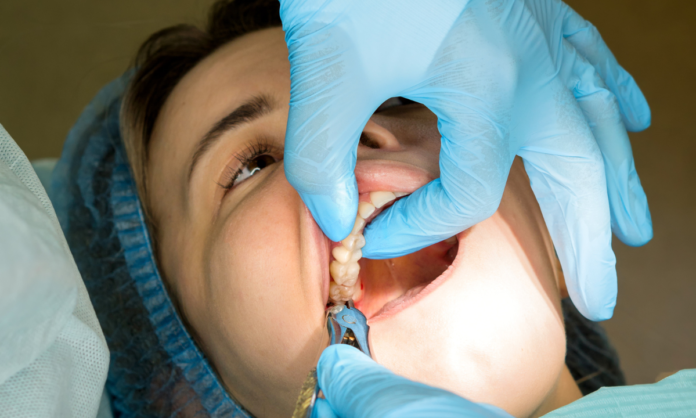Tooth removal can be an unsettling experience for many. Whether it’s due to decay, overcrowding, or other dental issues, the thought of losing a tooth often leads to anxiety and uncertainty. But fear not! Understanding what comes next can ease your worries and help you navigate the recovery process with confidence. Knowing how to care for your mouth after tooth extraction is essential for promoting healing and preventing complications. Let’s dive into everything you need to know about managing your oral health post-extraction—so you can get back to smiling in no time!
Preparing for Tooth Removal
Preparing for tooth removal starts with a visit to your dentist. They’ll assess your situation and explain the procedure in detail. Understanding what to expect can help ease any anxiety you may feel.
Next, consider arranging transportation. After the extraction, you might be groggy from anesthesia, making it unsafe to drive yourself home.
It’s also wise to clear your schedule for at least a couple of days post-surgery. This gives you ample time to rest and heal without rushing back into daily activities.
Gather supplies beforehand too—ice packs for swelling, gauze pads for bleeding control, and any prescribed medications.
Don’t forget about nutrition! Stock up on soft foods that are easy on your mouth during recovery. Being prepared will set the stage for a smooth experience as you undergo this necessary dental care process in Tempe.
What to Expect During the Procedure
During your tooth extraction, you’ll first meet with your dentist or oral surgeon. They will explain the process and answer any lingering questions.
Once you’re settled in the chair, local anesthesia will be administered to numb the area around the affected tooth. You might feel a slight prick from the needle, but this is temporary.
As they begin removing the tooth, you may hear some sounds like cracking or popping. This can be unnerving but remember that it’s normal during extractions.
Depending on your specific case, sedation options are also available for those needing more comfort during the procedure.
While you won’t feel pain due to anesthesia, pressure sensations may still occur as teeth are manipulated out of their sockets. The entire process typically lasts less than an hour—often much shorter!
Recovery and Home Care Tips
After your tooth extraction, focus on rest. Give your body time to heal. Avoid strenuous activities for at least 24 hours.
Keep gauze pads in place for the first few hours. Change them as needed if they become soaked with blood. This helps control bleeding and promotes a clot formation.
Ice packs can be your best friend during the initial recovery phase. Apply them intermittently to reduce swelling and discomfort.
Stay hydrated but avoid using straws for the first week. The suction can dislodge the blood clot that forms in the socket, leading to complications.
Gentle oral hygiene is essential. Rinse with warm salt water starting 24 hours post-surgery to keep your mouth clean without disturbing healing tissues.
Remember, soft foods are key during this period—think yogurt or applesauce! Listen to your body’s needs; it knows how to guide you through recovery effectively.
Foods to Avoid and Eat After Tooth Removal
After tooth removal, your diet plays a crucial role in recovery. It’s essential to nourish your body while being gentle on the healing site.
Avoid hard and crunchy foods like nuts, chips, and popcorn. These can disrupt the blood clot that forms after extraction. Sticky items such as caramel or chewing gum should also be off-limits, as they may pull at the stitches or disturb healing.
Instead, focus on soft foods that are easy to chew and swallow. Mashed potatoes, yogurt, smoothies, and applesauce are excellent choices. They provide necessary nutrients without putting pressure on your mouth.
Stay hydrated but steer clear of straws for at least a week post-surgery; sucking can dislodge the clot. Incorporating plenty of liquids will keep you comfortable while aiding in recovery too.
Managing Pain and Discomfort
After a tooth extraction, it’s normal to experience some pain and discomfort. The good news is that there are effective ways to manage it.
Over-the-counter pain relievers like ibuprofen or acetaminophen can help alleviate soreness. Follow the dosage instructions carefully for optimal results. If your dentist prescribes medication, make sure to take it as directed.
Applying an ice pack on the outside of your cheek can reduce swelling and numb the area. Just remember to wrap it in a cloth—direct contact with skin could cause frostbite.
Rest is essential during recovery. Avoid strenuous activities that might increase blood flow and exacerbate discomfort. Lying down with your head elevated can also help minimize swelling.
Stay hydrated but avoid using straws; sucking motions can dislodge the blood clot crucial for healing. Keeping these tips in mind will assist you in navigating this healing process more comfortably.
Signs of Complications
After a tooth extraction, it’s crucial to monitor your healing process. Sometimes complications can arise, signaling the need for immediate attention.
One common sign is excessive bleeding that doesn’t subside after 24 hours. If you notice blood soaking through your gauze or if it keeps flowing, reach out to your dentist.
Another red flag is severe pain that worsens instead of improving over time. While some discomfort is normal, sharp or throbbing pain might indicate an infection or dry socket.
Swelling around the extraction site may also suggest complications. If swelling increases significantly after the first few days post-surgery, it could be a sign of infection.
Watch for fever or chills developing within a few days of the procedure. These symptoms can indicate systemic issues needing prompt medical evaluation. Stay vigilant; your mouth’s health depends on it.
When to Contact Your Dentist
After a tooth extraction, it’s crucial to monitor your healing process closely. While discomfort is normal, certain signs may indicate the need for professional attention.
If you experience severe pain that worsens instead of improving after a few days, reach out to your dentist. This could signal an infection or dry socket.
Uncontrolled bleeding is another reason to make that call. A small amount of blood is expected initially, but if it persists or increases, don’t hesitate to get in touch.
Swelling and fever are red flags too. If swelling around the extraction site doesn’t subside within three days or if you develop a fever over 100°F (38°C), contact your dental office promptly.
Keep track of any unusual symptoms during recovery. It’s always better to be cautious when it comes to post-extraction care.
Long-term Care for Your Mouth After Tooth Removal
After a tooth extraction, long-term care is vital for maintaining oral health. Start by establishing a consistent dental hygiene routine. Brush twice daily and floss regularly to keep your mouth clean.
Consider using an antibacterial mouthwash to reduce the risk of infection. This can significantly help in promoting healing over time.
Don’t forget about regular check-ups with your dentist in Tempe. They can monitor your jawbone and gum health, ensuring everything is progressing well post-extraction.
Stay hydrated and maintain a balanced diet rich in vitamins and minerals. Foods high in calcium support bone density, which is particularly important after losing a tooth.
Be mindful of any changes in your mouth or bite as you recover. Reporting these to your dentist promptly can prevent future complications and ensure lasting oral health.
Conclusion
Caring for your mouth after tooth removal is essential to ensure a smooth recovery. It’s normal to feel anxious about the process, but understanding what to expect can ease some of that worry. Preparing adequately and knowing how to manage pain and discomfort will contribute significantly to your healing journey.
Eating the right foods and avoiding certain items play a crucial role in facilitating recovery. Being alert for any signs of complications can help you address issues promptly, ensuring you stay on track with your healing process.
Remember that maintaining proper oral hygiene is important even after an extraction. Your long-term care routine should include regular dental check-ups, healthy eating habits, and being aware of any changes in your mouth.
Taking these steps seriously will not only enhance your recovery but also promote better overall oral health moving forward. If you’re considering tooth extractions in Tempe or if you’ve recently undergone one, follow this guide closely for peace of mind during your healing phase while ensuring optimal care afterward.
































